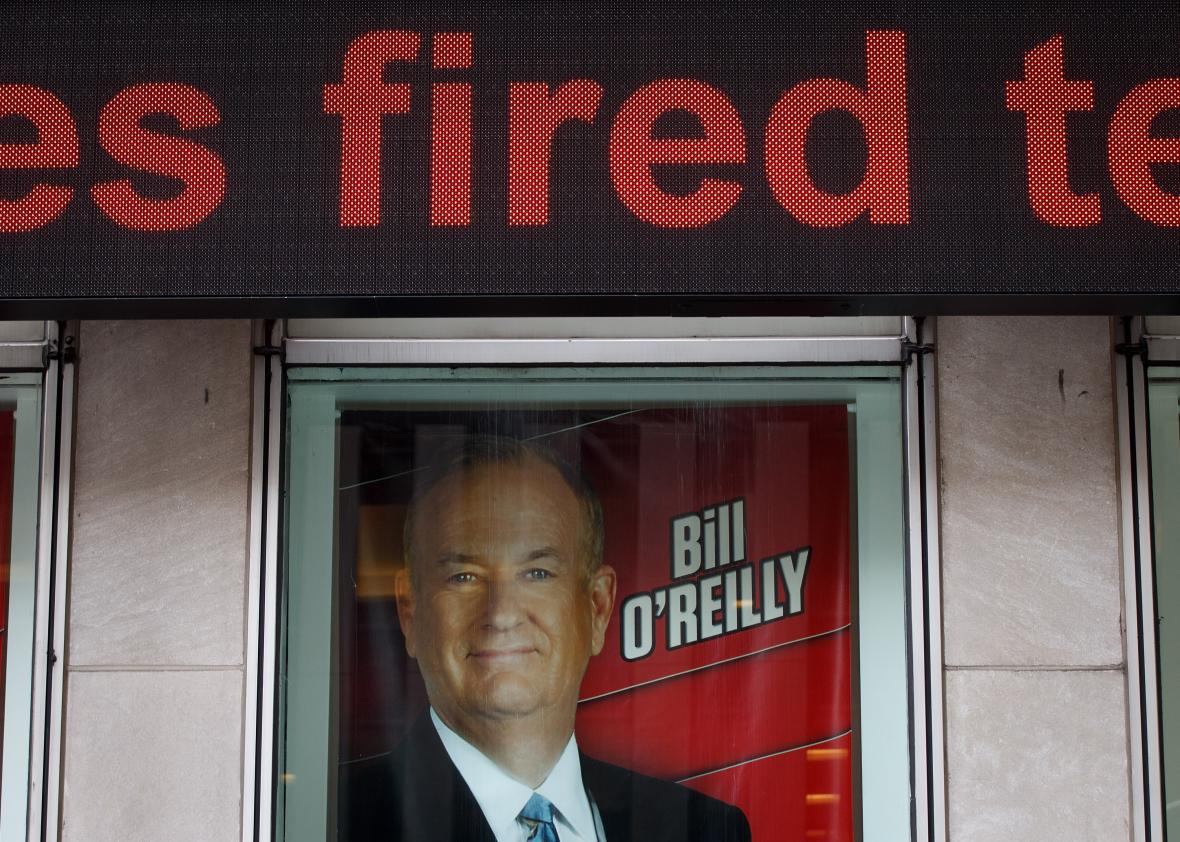Bill O’Reilly has returned from his Italian holiday without a day job. On Wednesday, Fox News axed the most popular host on cable news following an advertiser walkout over O’Reilly’s alleged history of sexual harassment, which he and the network had kept hidden by paying millions in lawsuit settlements. For now, though, O’Reilly still has his lucrative book-writing, his live appearances, and, of course, his millions.
And he may yet continue to darken America’s screens.
O’Reilly possesses a fan base that clings to him with Bieberian levels of devotion. His audience is more than happy to whitewash his bad behavior, blaming the victims and the liberal media, showering him with love and denial. They won’t all follow O’Reilly to his next act, but plenty will.
So what’s O’Reilly’s next step? How does he monetize (such a 21st century word for such a 20th century character) his rabid fans, the people who made sure his ratings went up even as advertisers began jumping ship? The answer is OTT.
That’s over-the-top, a term used to describe not O’Reilly’s bombastic style, but rather the technology for delivering television over the open internet. (In olden days, the cables to connect the devices that allowed for internet-based transmission literally snaked over the top of the TV set, hence the name.)
O’Reilly is one of the few media stars with enough name recognition and the sort of devoted fan base to make a standalone TV network a realistic possibility. Glenn Beck did it, and O’Reilly is arguably far more popular than Beck.
Launching an OTT network—as Donald Trump might have done had he lost the election—is not rocket science. There are plenty of high-quality software and hardware solutions that would allow him to launch a network quickly and easily, and to actually produce his show, at least in DIY style, all O’Reilly really needs is a couple of cameramen, stage lights, and microphones that can handle really, really loud voices.
He’d also need to decide on a business model—a monthly subscription plan; a transactional model, where each show is available individually; or, more likely, a hybrid, where subscribers save money over the cost of individual downloads, while also providing O’Reilly with a recurring revenue stream.
Throw in some red, white, and blue graphics and an easy-to-remember URL and you’re pretty much set. A deal with the larger streaming devices like Roku, Apple TV, and Amazon Firestick would help—assuming they don’t deem an O’Reilly channel too toxic to host—but otherwise a basic Chromecast, to stream the show from the web browser to their TVs, would work for his fans. (And really clear, really well-thought-out instructions: O’Reilly’s audience, after all, skews older.) Perhaps like Glenn Beck, O’Reilly would decide to expand his show into a full-on network, adding other like-minded commentators, and otherwise make a go of it as a digital property.
How much could O’Reilly make? If just over one-quarter of the 3.76 million people who watched his show on Tuesday, April 4 signed up for a $10 monthly subscription, he’d be grossing $10 million each month—or $120 million a year.
In order to launch a successful OTT network, you need to have the sort of devoted audience who will follow you into uncharted waters, fans who will gladly download your app and pay for the privilege. As such, O’Reilly is one of a small number of celebrities who could pull something like this off. There’s Oprah. Howard Stern. Maybe Rachel Maddow or Jerry Seinfeld.
The most enticing thing for O’Reilly might be this: He wouldn’t need to rely on the advertisers who were scared off by his alleged extracurricular activities. He just needs the support of his loyal fans. When you’ve got a built-in audience of millions, the options are fairly endless. (Then again, given the fleeting nature of fame in America and the advanced age of O’Reilly’s fan base, he probably would want to make his move fast.)
Critics of O’Reilly are cheering the end of his cable news dominance. But given the possibilities, he’ll only really disappear if he wants to do so.
